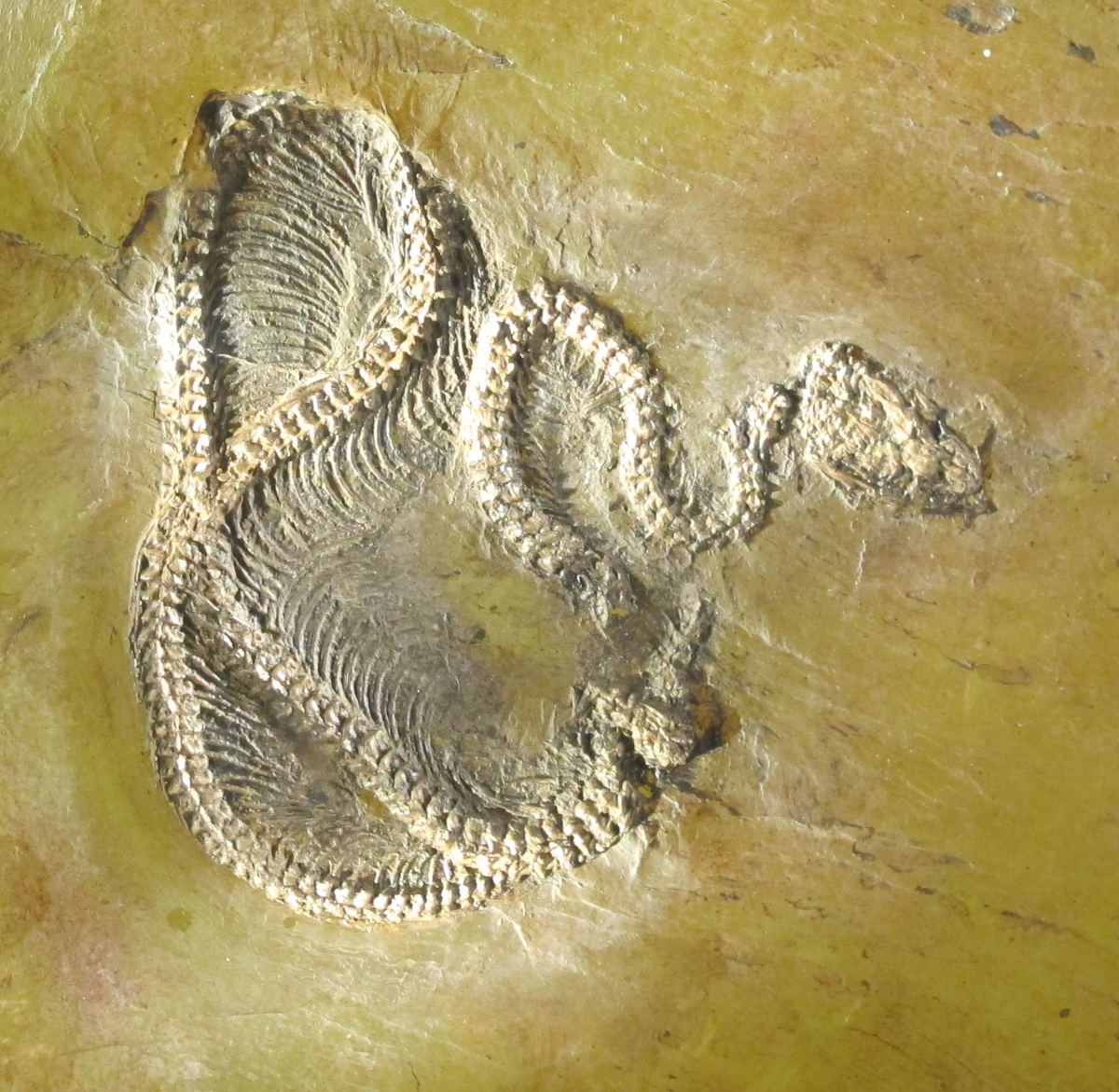
Messelopython freyi – or rather, its remains – as shown in the visitor centre of Grube Messel: the “world's oldest python“.
In early June, I visited Grubel Messel, a former quarry for oil shale that was devised to become a landfill but, thanks to a major dose of civic resistance, instead has become a UNESCO world heritage site for the richness in diversity and detail of the fossils found in its shale. Mind you, this is not about dinosaurs. The animals preserved there lived at least 10 million years after all dinosaurs except the birds went exinct, in the Eocene. Messel's most famous fossils are those of a small ancestor of our modern horses (“Urpferdchen”, in the PR of the site).
I, however, was much more smitten by the bones pictured above. That is mostly because the museum claims that these are the remains of the oldest python of the world. That may be a fleeting fame, as the genus was only introduced in 2020, but by the Messelopython page in the German Wikipedia (no translation yet, sorry), it is about 48 Million years old. And that certainly is quite an age even compared to the ancient Python 1.4 that I wrote my first Python programs in late in the last Millennium.
But that's what I wanted to publish that photo for: If you want to rant about some really, really ancient piece of Python code that somehow made it to the 2020ies, feel free to use this photo as an illustration; as almost everything here, it is distributed under CC0. Of course, the name of the beast, Messelopython, is an added bonus.
![[RSS]](./theme/image/rss.png)